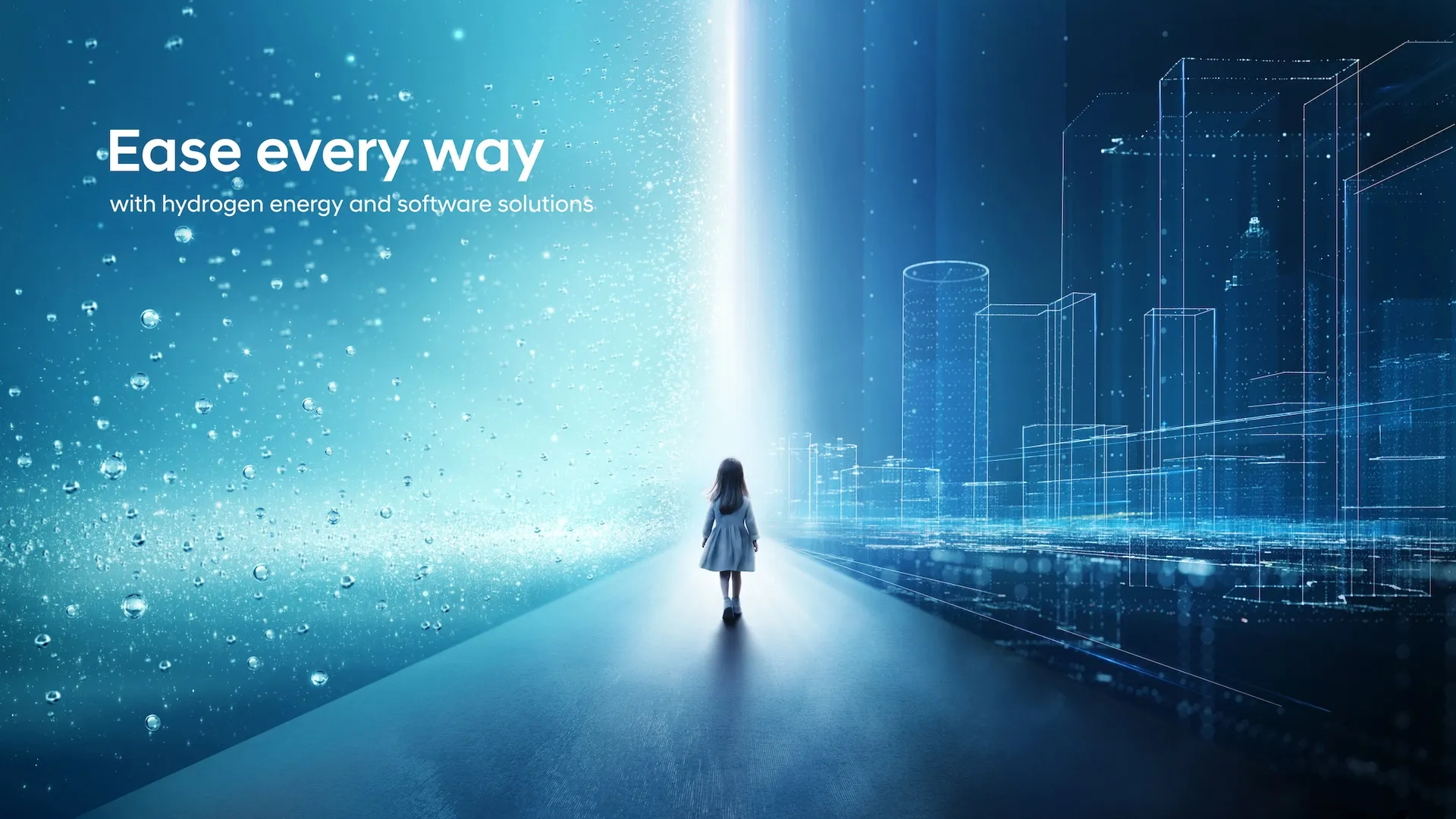[ad_1]
Hyundai on Monday revealed extra element about its hydrogen plans—together with a complete have a look at its work to determine a “hydrogen worth chain.”
Throughout Hyundai Motor Group, the corporate now tasks that by 2035 it can use 3 million metric tons yearly. By Inexperienced Automotive Studies’ calculations, that is sufficient to maintain a number of million fuel-cell-powered mild autos fueled.
However as Hyundai particulars, not all of that can go to vehicles, vehicles, and buses. The corporate’s hydrogen imaginative and prescient extends to trains, ships, energy turbines, building, steelmaking, robotics, and air mobility, and manufacturing itself.
With the overarching imaginative and prescient placed on show at CES this week in Las Vegas, Hyundai demonstrates that its hydrogen-focused HTWO enterprise now allows every stage of the clear hydrogen worth chain, from manufacturing to storage, transportation, and use.
On the street to attaining carbon neutrality by 2050, the corporate desires to make use of 100% renewable power at its abroad factories by 2045 and in each facility by 2050—and it says hydrogen will plan an necessary position in that.
Turning waste and outdated plastic into hydrogen
A part of that is because of come from a megawatt-scale PEM (proton change membrane) electrolyzer for inexperienced hydrogen. However the firm can also be specializing in a resource-circulation method, together with Waste-to-Hydrogen and Plastic-to-Hydrogen. Waste-to-Hydrogen employs the fermentation of natural waste to generate biogas that’s handled to seize carbon dioxide and hydrogen, whereas Plastic-to-Hydrogen melts waste plastics that may’t be recycled, eradicating byproducts alongside the way in which and making hydrogen by means of gasification.
Hyundai is already testing Waste-to-Hydrogen in Indonesia. Within the U.S., it’s taking part in a task within the institution of federally-funded hydrogen hubs, and on the Port of Oakland in California it’s testing 30 Hyundai Xcient hydrogen fuel-cell semis. Additionally, on the firm’s upcoming EV “Metaplant” in Georgia it’s aiming to make as much as 300,000 EVs yearly, it plans to deploy extra of those fuel-cell vehicles for logistics.
What about fuel-cell vehicles and vehicles?
Hyundai boasts that, at current, it has the world’s highest market share in hydrogen-powered automobile gross sales—a slice of the market that’s nonetheless extraordinarily small in itself.
At current, the Toyota Mirai and Hyundai Nexo are the one two publicly obtainable fuel-cell passenger autos for the U.S., whereas the BMW iX5 is presently being fleet-tested.
Toyota, which beforehand made North America the main focus for fuel-cell autos, has shifted its hydrogen gas cell automobile push towards Europe and China—though the automaker is now assembling hydrogen fuel-cell modules in Kentucky to be used in vehicles and different purposes, and it’s finding out how fuel-cell tech might assist clean the grid.
Don’t write off vehicles and SUVs altogether. Hydrogen possible will play an necessary position in serving to transition some forms of transportation away from inner combustion engines. However because the ecosystem takes kind, and hydrogen-delivery hurdles stay, Hyundai’s imaginative and prescient means that seeing the large image first might show higher in the long term.
[ad_2]

